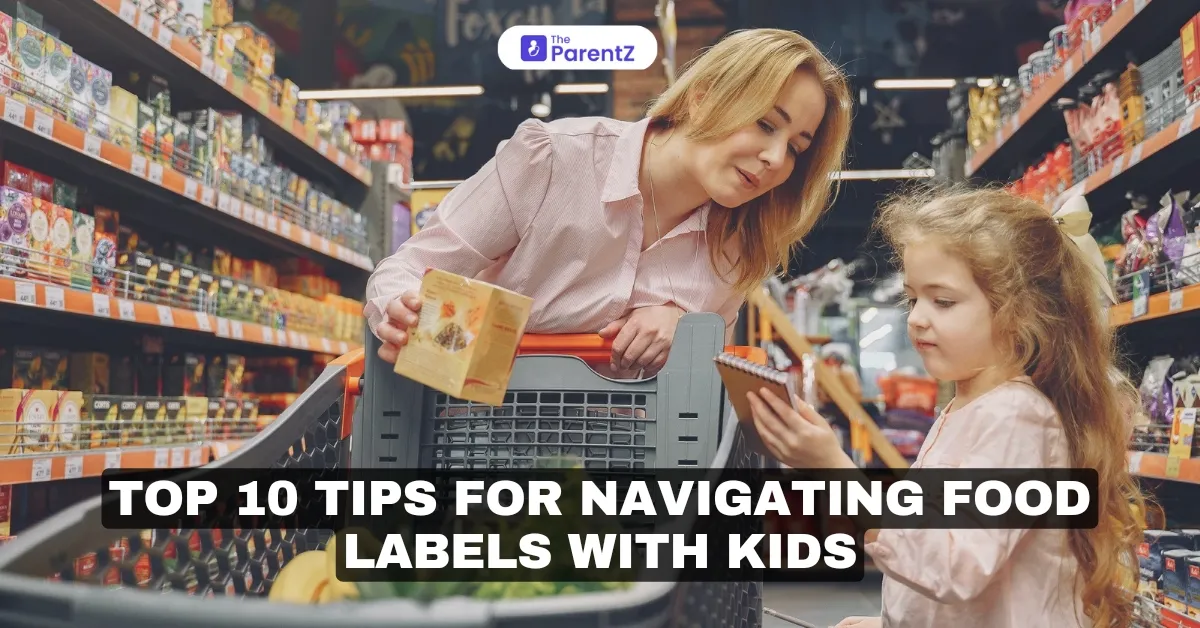Navigating food labels can feel like deciphering a foreign language, especially when trying to instill healthy choices in your children. With the rise of processed foods and the complexity of nutrition information, understanding food labels is more important than ever. Here are ten effective tips to help you and your kids make informed choices, ensuring that nutrition education becomes a fun and engaging part of your daily routine.
Ten effective tips to help you and your kids make informed choices
#1. Start with the Basics
Begin by teaching your children what food labels are and why they matter. Explain that food labels provide crucial information about what's inside the food they eat. Highlight the importance of reading labels to make healthy choices. Use simple language and relatable examples, like comparing two cereals and discussing which one has more sugar or fiber.
#2. Break Down the Nutrition Facts Label
The Nutrition Facts label can seem overwhelming at first glance. Break it down into manageable sections:
- Serving Size: Explain that this indicates how much of the product is considered one serving.
- Calories: Discuss how calories are a measure of energy and why it's important to know how many are in each serving.
- Nutrients: Focus on both nutrients to limit (like added sugars and saturated fats) and
those to encourage (like dietary fiber and vitamins).
By simplifying these components, you can help your child understand what they're looking at without feeling intimidated.
#3. Teach Them About Ingredients Lists
Ingredients lists reveal what goes into a product. Encourage your child to read these lists and identify familiar ingredients versus those that sound complicated or artificial. This can be a fun scavenger hunt—challenge them to find products with fewer ingredients or ones they can pronounce easily. This promotes critical thinking about food choices.
For instance, sodium is often overlooked but is crucial to monitor, especially in processed foods. Explain to your kids that too much sodium can lead to high blood pressure and other health problems later in life.
#4. Watch Out for Added Sugars
One of the biggest challenges in reading food labels is identifying added sugars, which can be hidden under various names like sucrose, fructose, or corn syrup. Teach your kids to look for these terms on labels and explain why excessive sugar intake leads to health issues like obesity and diabetes. Encourage them to choose products with little to no added sugars whenever possible.
#5. Make Comparisons Fun
Turn label reading into a game! Have your kids compare two similar products side by side. Ask questions like, "Which one has less sugar?" or "Which one has more fiber?" This not only makes learning enjoyable but also reinforces their ability to make informed decisions independently.
#6. Understand Claims and Certifications
Food packaging often features various claims like "organic," "natural," or "low-fat." Teach your children not to be swayed by these terms alone; instead, they should read the nutrition label for a complete picture of what they're consuming. Discuss what these claims mean and how they can sometimes be misleading. For example, a product labeled "low-fat" may still contain high amounts of sugar.
#7. Encourage Questions
Create an open dialogue about food labels where your child feels comfortable asking questions. If they encounter something they don't understand, encourage them to ask you or look it up together. This promotes curiosity and reinforces the idea that learning about nutrition is an ongoing process.
#8. Incorporate Nutrition Education into Meals
Make mealtime educational by involving your kids in meal preparation. As you cook together, discuss the labels of various ingredients you use. This hands-on approach helps reinforce their learning in a practical context while also fostering a love for cooking and healthy eating.
#9. Lead by Example
Children learn by observing their parents. Model good habits by consistently reading food labels yourself and making informed choices at the grocery store or during meal prep. Share your thought process with them—explain why you choose certain products over others based on their nutritional content.
#10. Celebrate Small Wins
Finally, celebrate your child's successes in understanding food labels! Whether they successfully choose a healthier snack or ask insightful questions about ingredients, acknowledge their efforts. Positive reinforcement will motivate them to continue making informed decisions about their nutrition.
Conclusion
Remember, learning to navigate food labels is a skill that takes time. Be patient and supportive as you and your kids embark on this journey. By working together, you can make informed choices and promote a healthier lifestyle for your family.









Be the first one to comment on this story.